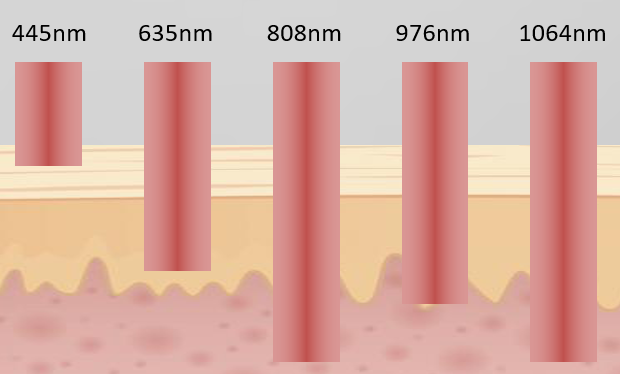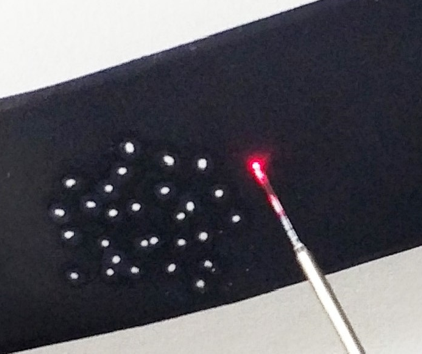There are several different wavelengths used in dental lasers, each with their own strengths and applications. Here is a comparison of some of the most common wavelengths used in dental lasers:
450nm: This wavelength is in the blue-violet part of the visible light spectrum and is often used for teeth whitening and soft tissue surgery. Traditional laser (980nm /810nm /940nm) needs tip initiation to cut soft tissue, which is time-consuming and highly dependent on operator’s experience. The cutting efficiency is dramatically different between good and bad tip initiation. 450nm is strongly absorbed by proteins, with 60 times absorption higher than that of Traditional laser. It can cut tissues at very high speed without tip initiation to reduce thermal damage and guarantee the excellent repeatability of cutting effect. Moreover, the photon energy of blue laser is twice that of traditional laser. So it can quickly activate the molecules of whitening gel, and the whitening effect is several times stronger.

650nm: This wavelength is in the red part of the visible light spectrum and has a high level of tissue penetration. In general, red lasers in the 630-670nm range are used for low-level laser therapy (LLLT) or photobiomodulation, which involves using light to stimulate healing and reduce pain and inflammation. LLLT is often used in physical therapy, sports medicine, and wound healing.

810nm/940nm/980nm: these wavelengths are commonly used for soft tissue surgery and periodontal therapy for quite a long time, such as gingivectomy and periodontal pocket disinfection. They have a moderate level of tissue penetration and strong anti-inflammatory effects, which makes them useful for periodontitis and root canal disinfection. But because of their low water and protein absorption, they cannot be used to cut soft tissue directly. The users have to initiate the fiber tip firstly to make the cutting.

1064nm: This wavelength has been used in dental laser before but rarely used for right now. Because its wavelength is very close to 980nm, it has basically been replaced by 980nm laser.
In general, the choice of wavelength depends on the specific application and the desired level of tissue penetration. Lasers with shorter wavelengths such as 810nm and 940nm are useful for precision soft tissue surgery, while longer wavelengths such as 1064nm are useful for hard tissue applications. Blue-violet lasers in the 450nm range are used for teeth whitening and certain soft tissue procedures. It is important to note that lasers with multiple wavelengths are also available, which can offer greater flexibility for different types of procedures.